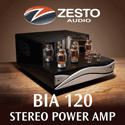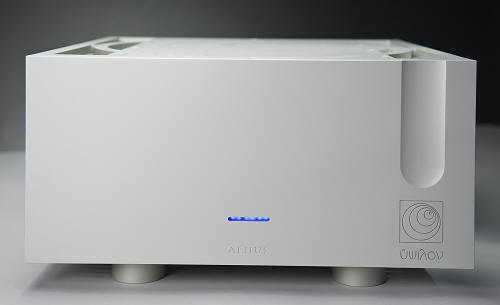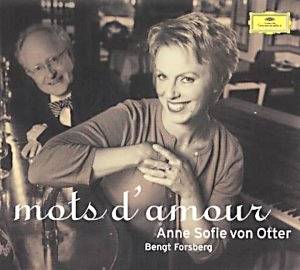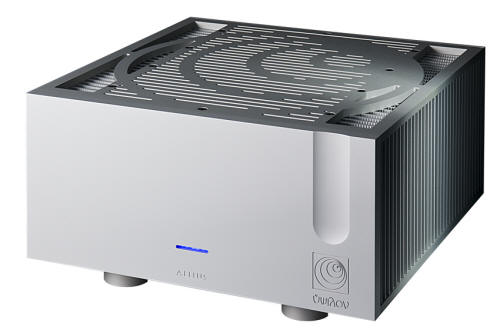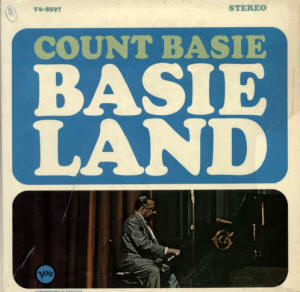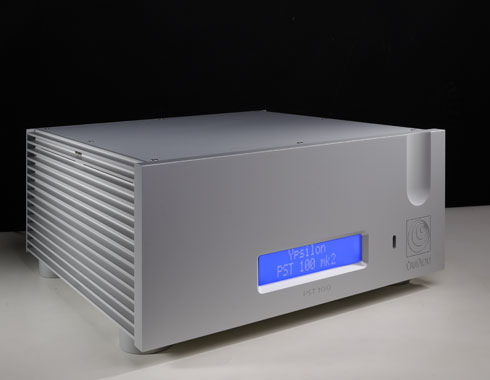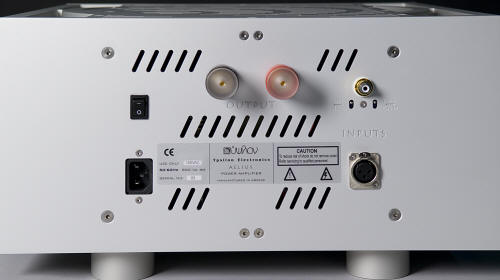|
|
You are reading the older HTML site
Positive Feedback ISSUE 75
ypsilon Aelius Amplifiers as reviewed by Marshall Nack
Après un rêve I'm in a smallish, wood paneled, recital hall. Perhaps it was someone's library, now re-purposed for concertizing? Mezzo-soprano Ann Sofie von Otter is telling us little stories in song. The sound is warm and inviting, the feel of the space is close. Oh, snap out of it—I'm in my listening room, of course, and it's just another session at Nack Labs. I just installed the Ypsilon Aelius monoblocks; the matching PST 100 Mk. II Preamp is up stream and we are listening to Mots d'Amour (DG 471 331-2). The Ypsilon pair conjured this potent magic, transcending each individual component's contribution. The math in this case is something like one + one = three.
From whispers to near shouts, the system scaled realistically. Dynamic transitions were uncommonly convincing. I hasten to add this display is from an unlikely source—simply a mezzo-soprano with piano accompaniment on an average Red Book CD, nothing audiophile. For such small forces—why do you need such big, expensive boxes and so much horsepower (220 watts/8 ohms)? If you've ever been proximate to a professional opera singer, you`ll know why. You won't have to get out the SPL meter to register her dynamic range.
And it really does show off the Aelius' range, which traveled right along with Ann Sofie. When her voice changes, you can rest assured it is generated by her efforts at vocal production, not mechanical strain or discontinuity generated by the amps. This occurs in a totally believable way. On the flip side, the Aelius revealed in detail the many little devices she employs to communicate her interpretation. She is continuously expressive: there's not a wasted note or a dull moment. This is what makes her great. I can't help contrasting this to Brazil, a CD I purchased recently featuring Stacey Kent as guest vocalist on a couple of tracks. Ms. Kent sings in a breathy whisper. There is no dynamic range in her flat, affectless, monotone; nor is there an attempt an interpretation. She is popularly esteemed and has found a niche among the audiophile crowd. My disappointment was deep—the attraction totally escapes me. The Ypsilon Signature Admittedly, what Ann Sofie is communicating are aspects of the performance best heard on gear of the caliber of the Aelius. It won't come through with most tube gear. Solid-state? Fuhgeddaboudit. This is a subset of resolution, but not one many designers are attuned to. Indulge me for a moment, please. We all know a components voice is like a window into the designer's taste. Where one engineer may seek a clean, neutral, powerful sound, another may be after classic tube sound. The possibilities are expansive, but in all cases, the designer goes through an iterative process, refining circuits and parts until he hits upon the one that speaks to him.
The folks at Ypsilon have their ears tuned for the intimate, intensely human details of a performance, qualities that are often found in classic Japanese gear like Audio Note Japan. Both brands employ tubes, transformers and uncommon circuit design to bring out these "unspoken aspects of the performance." They are a particular specialty of the Ypsilon sound. I'm not going to delve deeply into these soft virtues, as I'll just be repeating what I wrote recently in my PST-100 review. In brief, what these brands bring to the table is:
Your mind goes "Ah" when it hears this. Timbres especially are complex with an accent on beauty. Perhaps they are a bit more lush and beautiful than heard live. The Japanese designs in general take it a bit further than Ypsilon. Rounding out the Picture The portrait of the Aelius I've drawn so far shows off its expertise in the soft virtues. Indeed, that is this machine's forte. (Actually, that is Ypsilon's forte.) But there's more. Time for another musical example. I'm a fan of the Count. The trouble is he was so popular and prolific, in and out of the recording studios often, that pruning is necessary to sort the wheat from the chafe. I came across this Verve LP from 1964 by happenstance and it's a good one, easily beating the many Pablo LPs on people's lists. Plus it's available for a song.
What a band! This is the kind of playing that only gels after years on the road together. This isn't a pretty recording—I'm sure that's not what Basie wanted—and just by looking at the grooves you can tell Basie Land (Verve V6-8597) is cut hot. The brass tutti on this LP snap and sizzle. They are so hot, they can sound raw and unvarnished. However, there's a difference between these jagged brass rim effects and the distortion that an audio component produces when it can't handle signal peaks. Those brass tutti sound like they're supposed to through the Aelius. Macro dynamic volleys test the limits of my associated components. This was really surprising—those macros did not give up any heft compared to the Soulution 710 or the Audionet AMP monos. (Although they couldn't match the seismic shocks generated by the Tenor 175S Stereo, the CH Precision A1 in mono, or the Audionet MAX monos.) Nor did it fall short in detail retrieval—the amount of information presented is right up there, as well. Ditto for the soundstage, which is highly dimensional and wall to wall, seamless across the width and layered in depth. The Count and his men are full size and the brass instruments are hard left/right, located in the speakers. Alternating with the slam of the tutti are occasional soft, almost caressing, trumpet and sax solos, with Basie's piano straight down the middle sounding rather delicate. The Aelius can morph like that. It can vary style to suit whatever comes along and will not force the music into bombast. Tonal Description This is a great LP to demo macro prowess and to show off how well the Aelius maneuvers around sharp corners. Transients are fast moving, although with a soft edge, while decays lengthened moderately. The midrange presents a "see into" clarity that revealed tons of inner life; the bass is well represented, but could be tighter and have more texture; the treble is sweet and extended. Overall, the frequency sweep is smooth, with lots of body and flesh, and a tad warm. A Well-behaved Soundstage When I reviewed the PST 100, I was struck by its soundstage. It is remarkably well-behaved—it never does anything offensive. So it is with the Aelius. There are no sharp image borders—there is no sharp anything. The stage has a soft quality and is a bit laid back. Images are diffuse with lots of air around them, defined more by timbre than by precise borders. It does not POP like some of the powerful solid-state amps I've had in lately. In this manner, the Aelius insures it will never sound harsh or abrasive. The stage forms at the speakers, recedes from that point and does not budge. Regardless of the musical content, the front line does not advance forward from the plane of the speakers. This is how sound behaves in large spaces like rear parquet or first tier at Carnegie Hall, an ideal setting for classical music listening. In general, those powerful solid-state amps move your perspective closer, more like mid-parquet at Carnegie. And they tend to jiggle the soundstage back and forth in tandem with the SPL or frequency. That is, it comes forward when it gets loud or has a lot of treble content. Ancillary System: the PST 100 Mk II Preamp Back when this review project was in the discussion phase, the importer decided to send both the Ypsilon amp and preamp and requested separate reviews. The PST 100 Preamp came first and I had time to get acquainted. It brought back fond memories of the VPS 100 phono stage I reviewed a while ago. These components make a lasting impression—they don't sound like the rest of the pack.
I had one apprehension going into this review: those two preamps had the same voicing, including some tubey colorations. Would the Aelius share that and, if so, would it compound, pushing over the edge into euphony? That didn't happen, because the Aelius hews closer to center on the dial than the two preamps. The Ypsilon signature is more moderate. Panel mate Sheldon summed it up well: the Aelius is more of a reporter than a colorist/interpreter. More Associated Equipment: CH Precision For a while I had the CH Precision D1 SACD Player and C1 DAC/Pre as a two-box digital source fronting the Ypsilon PST 100 Preamp and Aelius monoblocks. WOW! This is the incredible teleportation machine I described at the top of this review. There is an awful lot of internet buzz about the CH front-end—many people think it's the ultimate. I could hear why. This system represents a benchmark in my audio odyssey. That old stereo magic happened often now. The myth is it recreates the live event—but who knows? It is not the same as the teleportation created by SET gear, like Audio Note Japan. SET gear has even more intimacy and places you up close and personal with the musicians, like they are playing in your room, just for you. Magical, yes: realistic, less so. Introducing the Trinity Preamp I swapped to Kubala-Sosna balanced cable and moved in my Trinity Preamp. More WOW factor! Gone was the sweet, flowing line and effortless naturalism of the PST 100 Preamp, but … Live in the Studio The Trinity brought unprecedented control and power, and introduced a third type of transport—I was present in the recording studio. This lineup—CH Precision digital→Trinity Preamp→Aelius amps—had a live-in-the-studio type of sound. Ah, the fun and games of Hi-Fi. What a glorious sound! The Aelius provided just the right degree of softening to temper the incisiveness of the upstream gear. The result was super refined, incisive, with the Ypsilon humanistic touch—really, a dream recipe for everything you could want.
Cosmetics and Operation Each Aelius is a large chunk of brushed aluminum weighing 100lbs. The chassis is fabricated in Germany and Italy. Everything else is made and assembled in-house in Greece. The face plate is adorned with the Ypsilon logo engraved in the lower right corner, just like the preamp and phono. The logo appears again, laser cut into the top plate—a distinctive touch. Louvered heat sinks along the sides and top provide dissipation of the considerable warmth generated. The rear panel has the expected functional provisions and nothing more. The Aelius is understated, elegant and utilitarian; it looks different from most amps.
Installation is a snap. Place them on a good amp stand, allowing for air circulation, and plug them into the wall or a passive distributor strip. (At this performance level active conditioning should be avoided.) Set the XLR/RCA input switch on the back and push the old-fashioned On/Off rocker switch. The blue power bar in front lights up and that's it. Wait 30 seconds for tube warm up and you're good to go. (There is no notification when it passes from warm up to Ready State.) A couple of notes: The Mundorf binding posts are really nice—over-sized and very easy to use. I wish more manufacturers used them. The chassis, while of formidable thickness, rings when struck by a knuckle wrap. I didn't attempt to dampen it, but you may want to.
Design The Aelius is a two gain stage, "bridged single-ended design" that possesses the musicality of pure single-ended and the power and control of push-pull. The input stage uses a Siemens C3g valve and is coupled to the MOSFET output stage with a C-core transformer of very wide bandwidth (-3db@ 10Hz-90kHz). The first 60 watts are Class A, then it moves into Class A/B for a rated output of 220-wpc into 8 Ohm. The power supply uses an EZ81valve for rectification and a transformer of very large size and special winding techniques. It is said the secret of the Ypsilon sound is their transformers. They are painstakingly hand-wound—a tedious, time-consuming task. Every product in the line has them: the Aelius has two transformers and three power supply chokes. Conclusion Ever go shopping for a winter scarf? I like to test the "hand" of each offering, noting quality and price. The acrylic one would do the job, but it doesn't feel so nice. How about the wool or the cashmere blend? Silk, maybe? Any one of these materials would do the job and each has its own "hand." Don't we go through the same process with components? In this analogy, the Ypsilon Aelius Mono Amps are the equivalent of the finest silk-cashmere blend. They have the nap of lux on your ear; their sound feels good there. This is my third taste of Ypsilon componentry and it has been consistent. Within that spectrum, I'd place the PST 100 Preamp and VPS 100 Phono Stage together on the musical side in their voicing; the Aelius mono amps tack closer to neutral. Whether the Aelius was paired with the matching PST 100 or my Trinity Preamp, the verdict was the same. These products are communication specialists. Everybody enjoyed them. I was very tempted to hold on to them and make them my new reference. That would have been a radical jump from my Soulution 710 Stereo Amp. Yes, they're that good. Marshall Nack
Aelius
Power Amplifiers
Ypsilon
Electronics Importer
Aaudio
Imports
|






